Today the 'Ultimate Countdown' from NVIDIA ended with the announcement of the RTX 3090, RTX 3080 and the RTX 3070, all of them being absolute monsters with 2nd generation RTX. Powered by their Ampere generation, this definitely sounds like a big generational leap. It's really easy to be excited about it and I am.
Not just in terms of power, the price of the main two RTX 3080 and the RTX 3070 puts them well in line with the current 20xx generation which is pretty amazing for the difference in power. We need to take anything with a pinch of salt though of course, until independent benchmarks can be done.
Here's some shots from the presentation:
Meanwhile, the RTX 3090 is aimed at replacing the TITAN GPUs they did previously. A true overkill GPU, which they claim will let you play 8K.
Full specifications:
| GeForce RTX 3090 |
GeForce RTX 3080 |
GeForce RTX 3070 |
|
|---|---|---|---|
| NVIDIA CUDA® Cores | 10496 | 8704 | 5888 |
| Boost Clock (GHz) | 1.70 | 1.71 | 1.73 |
| Standard Memory Config | 24 GB GDDR6X | 10 GB GDDR6X | 8 GB GDDR6 |
| Memory Interface Width | 384-bit | 320-bit | 256-bit |
| Ray Tracing Cores | 2nd Generation | 2nd Generation | 2nd Generation |
| Tensor Cores | 3rd Generation | 3rd Generation | 3rd Generation |
| NVIDIA Architecture | Ampere | Ampere | Ampere |
| NVIDIA DLSS | Yes | Yes | Yes |
| PCI Express Gen 4 | Yes | Yes | Yes |
| NVIDIA G-SYNC® | Yes | Yes | Yes |
| Vulkan RT API, OpenGL 4.6 | Yes | Yes | Yes |
| HDMI 2.1 | Yes | Yes | Yes |
| DisplayPort 1.4a | Yes | Yes | Yes |
| NVIDIA Encoder | 7th Generation | 7th Generation | 7th Generation |
| NVIDIA Decoder | 5th Generation | 5th Generation | 5th Generation |
| VR Ready | Yes | Yes | Yes |
| Maximum Digital Resolution (1) | 7680x4320 | 7680x4320 | 7680x4320 |
| Standard Display Connectors | HDMI 2.1, 3x DisplayPort 1.4a | HDMI 2.1, 3x DisplayPort 1.4a | HDMI 2.1, 3x DisplayPort 1.4a |
| Multi Monitor | 4 | 4 | 4 |
| HDCP | 2.3 | 2.3 | 2.3 |
| Length | 12.3" (313 mm) | 11.2" (285 mm) | 9.5" (242 mm) |
| Width | 5.4" (138 mm) | 4.4" (112 mm) | 4.4" (112 mm) |
| Height | 3-Slot | 2-Slot | 2-Slot |
| Maximum GPU Temperature (in C) | 93 | 93 | 93 |
| Graphics Card Power (W) | 350 | 320 | 220 |
| Recommended System Power (W) (2) | 750 | 750 | 650 |
| Supplementary Power Connectors | 2x PCIe 8-pin | 2x PCIe 8-pin | 1x PCIe 8-pin |
On top of all that, they're also the first to come with support for the AV1 codec, which is very promising for being more efficient and more feature-filled than older popular codecs.
Pricing / Availability
- RTX 3090 - £1,399 / $1,499 - Available September 24th
- RTX 3080 - £649 / $699 - Available September 17th
- RTX 3070 - £469 / $499 - Available October (no exact date given)
Each will also have a special Founders edition available, which an increased price.
When going by price to performance ratio, the RTX 3070 sounds absolutely ridiculous. If (big if), it truly has the RTX 2080 ti level performance for a vastly cheaper sum then it alone could help usher in a new level of gaming performance for a great many people. More GPUs based on Ampere will be coming, as these are just the first. I can't help but think about the RTX 3060, whenever they announce one that is. Considering the power of the RTX 3070, the RTX 3060 is quite likely to be a mega deal for people after both performance and an affordable price. Also makes me curious even more so now on Intel, as they announced their Xe-HPG gaming GPUs which arrive next year. Then we have AMD too with RDNA2 which is supposed to be this year. So much to look forward to for hardware enthusiasts!
Since NVIDIA support Ray Tracing already on Linux with their own extensions, and they already have early support for the vendor-neutral provisional Ray Tracing extensions in Vulkan it's going to be very interesting to see just how far developers will push it. Ideally though, we need more games on Linux that use it.
For those of you who really do love the serious technical side of it, NVIDIA has announced the release of a 'whitepaper' on the RTX 30 series which will be available on September 17. They say it will give a lot of detail on every aspect of the new cards in 'exhaustive detail'.
Other Windows-only stuff was announced too of course like RTX for Fortnite, a new 'NVIDIA Broadcast' effects suite application for livestreamers like backgrounds and noise removal, another RTX-powered application for video editing and more. Not that any of it matters for Linux users and gamers - sadly.
You can watch the whole thing below and see the announcement here.

Direct Link
Impressive as the performance of the new releases is, this new generation will actually interest me when/if amd and/or nvidia release a sub-$200 video card with faster than 2070 super performance or, even better, a sub-$70 card with faster than 1660 super performance.
Last edited by emphy on 2 Sep 2020 at 12:31 pm UTC
And what's the alternative?
AMD is the only competitor and it's way too expensive.
Not sure how you can compare prices for not yet released cards. Regular prices for comparable cards for AMD are actually lower than for Nvidia.
And AMD cards don't really lack any features that I care about.
Last edited by Shmerl on 2 Sep 2020 at 6:41 pm UTC
And that happens because of the State -- specially laws and regulations --, not in spite of it. Big businesses do constantly skew the perception of the public to make it look like there is lack of regulations, and they win double by more and more obstacles which they are able to work with but not their smaller competitors. A freer market with no rules and thus no barrier against newcomers would be the best deterrent against monopolies. Sure, I understand there is a complex production chain, but these very same suppliers would benefit from more customers too, so it's not this chain that prevents competition. Conversely, it's hopeless to try and use the State against the big guys, they are best buddies and will use this whole perception to their profit.A big problem is that all the players in a market tend to end up being bought out by the larger players. That's basically just part of capitalism. (...)I just hope old gpu prices goes down, but it never happens.
They'd really prefer to price gouge you at all points in time, not just at release.
All that needs to be done is:
a) passing laws that force companies (...).
How about the complete opposite? Throw away all laws that currently pose an obstacle to competitors, don't force companies to anything. New players on the market will appear trying hard to get their niche, boom, prices drop. This is actually happening with VR sets right now.
Creating more laws against businesses does not make things better for the consumers. It onerates the entire production chain and makes it harder for everyone to get that. And it keeps competitors away for the big players. That's exactly what you don't want to happen.
Removing laws that prevent a business from polluting will suddenly stop pollution?
I guess we should make murder legal too so that all murder stops.
As for prices and wages, capitalism is a failure and laws are made in order to prop up capitalism from failing. Without laws such as anti-monopoly ones, you get monopolies. That is the natural order of things. You can't have infinite competition, especially on a finite planet, and that competition doesn't necessarily magically result in lower prices especially once you get duopolies/monopolies/etc because if the controllers of production seek higher prices then no one cares about trying to give cheap prices because that stops making them more money at a certain point (lowering prices more doesn't result in increased number of sales/money). The only thing that really kept capitalism afloat anytime in history where there weren't yet laws stopping them from doing evil things is because the controllers of production had morals.
It's not efficient to have ten different delivery trucks driving down a neighborhood street. It's the cheapest and most efficient to have ONE, and one that is owned by the people or has laws preventing profiteering so that everyone gets the cheapest service possible. As long as that service is democratically and decently managed like the USPS here in the U.S., it will always be the best system. The only way to have that kind of efficiency with capitalism would be to have a monopoly, but then you'd instantly get price gouging unless you had laws to ensure that they were fair and not abusive like that. Why have a mini economic dictatorship entity like that when you can have it democratized instead and owned by the workers or the public at large?
Capitalism ALWAYS results in monopolies and extreme profiteering without laws to stop the greed from spiralling out of control, but inevitably capitalism also corrupts the government to undermine all that which is why so many monopolies reign supreme right now because of corrupt governments.
Likewise, I can also argue that governments ALWAYS are susceptible to corruption and ineptitude, and that's why having watchdogged democratic governments to prevent such abuse is required.
So, you want fight monopoly with... monopoly? State is also monopol. With all negative efects, but its monopoly on violance.
Problem is that state benefits big corporations, with huge legal and lobbying team and resources. Why you think that EU bans old car? Green politics? No. Car makers want protection from the competition. Developmnet cost for Euro 6 are so huge, that is no chance fo develop it without help and without patent infringement. But concurency still emerging but now in form of EV.
Remove regulation (patents included, or at least shorten their duration) and you kill monopolies without milions of other regulations.
You do have a point. In theory, the advantage of the state is that it works for the public rather than private shareholders. The "shareholders" of the state is us. In practice, generally not so much. What's needed is deeper democracy, including in arenas currently considered off-limits to the concept because they're "the economy". Whether it's via a truly democratically controlled state, or democratically controlled companies (ie co-operatives) or some combination, what we need is that grand cliche that's so rarely tried: Power to the people.And that happens because of the State -- specially laws and regulations --, not in spite of it. Big businesses do constantly skew the perception of the public to make it look like there is lack of regulations, and they win double by more and more obstacles which they are able to work with but not their smaller competitors. A freer market with no rules and thus no barrier against newcomers would be the best deterrent against monopolies. Sure, I understand there is a complex production chain, but these very same suppliers would benefit from more customers too, so it's not this chain that prevents competition. Conversely, it's hopeless to try and use the State against the big guys, they are best buddies and will use this whole perception to their profit.A big problem is that all the players in a market tend to end up being bought out by the larger players. That's basically just part of capitalism. (...)I just hope old gpu prices goes down, but it never happens.
They'd really prefer to price gouge you at all points in time, not just at release.
All that needs to be done is:
a) passing laws that force companies (...).
How about the complete opposite? Throw away all laws that currently pose an obstacle to competitors, don't force companies to anything. New players on the market will appear trying hard to get their niche, boom, prices drop. This is actually happening with VR sets right now.
Creating more laws against businesses does not make things better for the consumers. It onerates the entire production chain and makes it harder for everyone to get that. And it keeps competitors away for the big players. That's exactly what you don't want to happen.
Removing laws that prevent a business from polluting will suddenly stop pollution?
I guess we should make murder legal too so that all murder stops.
As for prices and wages, capitalism is a failure and laws are made in order to prop up capitalism from failing. Without laws such as anti-monopoly ones, you get monopolies. That is the natural order of things. You can't have infinite competition, especially on a finite planet, and that competition doesn't necessarily magically result in lower prices especially once you get duopolies/monopolies/etc because if the controllers of production seek higher prices then no one cares about trying to give cheap prices because that stops making them more money at a certain point (lowering prices more doesn't result in increased number of sales/money). The only thing that really kept capitalism afloat anytime in history where there weren't yet laws stopping them from doing evil things is because the controllers of production had morals.
It's not efficient to have ten different delivery trucks driving down a neighborhood street. It's the cheapest and most efficient to have ONE, and one that is owned by the people or has laws preventing profiteering so that everyone gets the cheapest service possible. As long as that service is democratically and decently managed like the USPS here in the U.S., it will always be the best system. The only way to have that kind of efficiency with capitalism would be to have a monopoly, but then you'd instantly get price gouging unless you had laws to ensure that they were fair and not abusive like that. Why have a mini economic dictatorship entity like that when you can have it democratized instead and owned by the workers or the public at large?
Capitalism ALWAYS results in monopolies and extreme profiteering without laws to stop the greed from spiralling out of control, but inevitably capitalism also corrupts the government to undermine all that which is why so many monopolies reign supreme right now because of corrupt governments.
Likewise, I can also argue that governments ALWAYS are susceptible to corruption and ineptitude, and that's why having watchdogged democratic governments to prevent such abuse is required.
So, you want fight monopoly with... monopoly? State is also monopol.
You do have a point. In theory, the advantage of the state is that it works for the public rather than private shareholders. The "shareholders" of the state is us. In practice, generally not so much. What's needed is deeper democracy, including in arenas currently considered off-limits to the concept because they're "the economy". Whether it's via a truly democratically controlled state, or democratically controlled companies (ie co-operatives) or some combination, what we need is that grand cliche that's so rarely tried: Power to the people.And that happens because of the State -- specially laws and regulations --, not in spite of it. Big businesses do constantly skew the perception of the public to make it look like there is lack of regulations, and they win double by more and more obstacles which they are able to work with but not their smaller competitors. A freer market with no rules and thus no barrier against newcomers would be the best deterrent against monopolies. Sure, I understand there is a complex production chain, but these very same suppliers would benefit from more customers too, so it's not this chain that prevents competition. Conversely, it's hopeless to try and use the State against the big guys, they are best buddies and will use this whole perception to their profit.A big problem is that all the players in a market tend to end up being bought out by the larger players. That's basically just part of capitalism. (...)I just hope old gpu prices goes down, but it never happens.
They'd really prefer to price gouge you at all points in time, not just at release.
All that needs to be done is:
a) passing laws that force companies (...).
How about the complete opposite? Throw away all laws that currently pose an obstacle to competitors, don't force companies to anything. New players on the market will appear trying hard to get their niche, boom, prices drop. This is actually happening with VR sets right now.
Creating more laws against businesses does not make things better for the consumers. It onerates the entire production chain and makes it harder for everyone to get that. And it keeps competitors away for the big players. That's exactly what you don't want to happen.
Removing laws that prevent a business from polluting will suddenly stop pollution?
I guess we should make murder legal too so that all murder stops.
As for prices and wages, capitalism is a failure and laws are made in order to prop up capitalism from failing. Without laws such as anti-monopoly ones, you get monopolies. That is the natural order of things. You can't have infinite competition, especially on a finite planet, and that competition doesn't necessarily magically result in lower prices especially once you get duopolies/monopolies/etc because if the controllers of production seek higher prices then no one cares about trying to give cheap prices because that stops making them more money at a certain point (lowering prices more doesn't result in increased number of sales/money). The only thing that really kept capitalism afloat anytime in history where there weren't yet laws stopping them from doing evil things is because the controllers of production had morals.
It's not efficient to have ten different delivery trucks driving down a neighborhood street. It's the cheapest and most efficient to have ONE, and one that is owned by the people or has laws preventing profiteering so that everyone gets the cheapest service possible. As long as that service is democratically and decently managed like the USPS here in the U.S., it will always be the best system. The only way to have that kind of efficiency with capitalism would be to have a monopoly, but then you'd instantly get price gouging unless you had laws to ensure that they were fair and not abusive like that. Why have a mini economic dictatorship entity like that when you can have it democratized instead and owned by the workers or the public at large?
Capitalism ALWAYS results in monopolies and extreme profiteering without laws to stop the greed from spiralling out of control, but inevitably capitalism also corrupts the government to undermine all that which is why so many monopolies reign supreme right now because of corrupt governments.
Likewise, I can also argue that governments ALWAYS are susceptible to corruption and ineptitude, and that's why having watchdogged democratic governments to prevent such abuse is required.
So, you want fight monopoly with... monopoly? State is also monopol.
My ancestors alredy tried it and we get out of totalitarian dictatorship of comunist party in 1989. Never again. We need free marked economy with minimal state. Not another example of horrible results with good intention.
First, I don't recall advocating anything resembling Soviet Communism, whose state and production were very much the opposite of democratically controlled. Second, bad though Soviet Communism was, when Russia stopped being Communist and introduced a free market economy with a minimalist state, people started dying like flies. The place went into freefall. Things didn't start going back to normal until they reasserted the authority of the state and went a bit more mixed.You do have a point. In theory, the advantage of the state is that it works for the public rather than private shareholders. The "shareholders" of the state is us. In practice, generally not so much. What's needed is deeper democracy, including in arenas currently considered off-limits to the concept because they're "the economy". Whether it's via a truly democratically controlled state, or democratically controlled companies (ie co-operatives) or some combination, what we need is that grand cliche that's so rarely tried: Power to the people.And that happens because of the State -- specially laws and regulations --, not in spite of it. Big businesses do constantly skew the perception of the public to make it look like there is lack of regulations, and they win double by more and more obstacles which they are able to work with but not their smaller competitors. A freer market with no rules and thus no barrier against newcomers would be the best deterrent against monopolies. Sure, I understand there is a complex production chain, but these very same suppliers would benefit from more customers too, so it's not this chain that prevents competition. Conversely, it's hopeless to try and use the State against the big guys, they are best buddies and will use this whole perception to their profit.A big problem is that all the players in a market tend to end up being bought out by the larger players. That's basically just part of capitalism. (...)I just hope old gpu prices goes down, but it never happens.
They'd really prefer to price gouge you at all points in time, not just at release.
All that needs to be done is:
a) passing laws that force companies (...).
How about the complete opposite? Throw away all laws that currently pose an obstacle to competitors, don't force companies to anything. New players on the market will appear trying hard to get their niche, boom, prices drop. This is actually happening with VR sets right now.
Creating more laws against businesses does not make things better for the consumers. It onerates the entire production chain and makes it harder for everyone to get that. And it keeps competitors away for the big players. That's exactly what you don't want to happen.
Removing laws that prevent a business from polluting will suddenly stop pollution?
I guess we should make murder legal too so that all murder stops.
As for prices and wages, capitalism is a failure and laws are made in order to prop up capitalism from failing. Without laws such as anti-monopoly ones, you get monopolies. That is the natural order of things. You can't have infinite competition, especially on a finite planet, and that competition doesn't necessarily magically result in lower prices especially once you get duopolies/monopolies/etc because if the controllers of production seek higher prices then no one cares about trying to give cheap prices because that stops making them more money at a certain point (lowering prices more doesn't result in increased number of sales/money). The only thing that really kept capitalism afloat anytime in history where there weren't yet laws stopping them from doing evil things is because the controllers of production had morals.
It's not efficient to have ten different delivery trucks driving down a neighborhood street. It's the cheapest and most efficient to have ONE, and one that is owned by the people or has laws preventing profiteering so that everyone gets the cheapest service possible. As long as that service is democratically and decently managed like the USPS here in the U.S., it will always be the best system. The only way to have that kind of efficiency with capitalism would be to have a monopoly, but then you'd instantly get price gouging unless you had laws to ensure that they were fair and not abusive like that. Why have a mini economic dictatorship entity like that when you can have it democratized instead and owned by the workers or the public at large?
Capitalism ALWAYS results in monopolies and extreme profiteering without laws to stop the greed from spiralling out of control, but inevitably capitalism also corrupts the government to undermine all that which is why so many monopolies reign supreme right now because of corrupt governments.
Likewise, I can also argue that governments ALWAYS are susceptible to corruption and ineptitude, and that's why having watchdogged democratic governments to prevent such abuse is required.
So, you want fight monopoly with... monopoly? State is also monopol.
My ancestors alredy tried it and we get out of totalitarian dictatorship of comunist party in 1989. Never again. We need free marked economy with minimal state. Not another example of horrible results with good intention.
Within capitalist countries it is noticeable that the most prosperous ones with the least poverty and misery are generally the least free-markety with the strongest states--the Nordics and such like. So I really don't think there's a strong case to be made for everyone imitating the US or some Baltic hellholes that caught the free market bug.
First, I don't recall advocating anything resembling Soviet Communism, whose state and production were very much the opposite of democratically controlled. Second, bad though Soviet Communism was, when Russia stopped being Communist and introduced a free market economy with a minimalist state, people started dying like flies. The place went into freefall. Things didn't start going back to normal until they reasserted the authority of the state and went a bit more mixed.You do have a point. In theory, the advantage of the state is that it works for the public rather than private shareholders. The "shareholders" of the state is us. In practice, generally not so much. What's needed is deeper democracy, including in arenas currently considered off-limits to the concept because they're "the economy". Whether it's via a truly democratically controlled state, or democratically controlled companies (ie co-operatives) or some combination, what we need is that grand cliche that's so rarely tried: Power to the people.And that happens because of the State -- specially laws and regulations --, not in spite of it. Big businesses do constantly skew the perception of the public to make it look like there is lack of regulations, and they win double by more and more obstacles which they are able to work with but not their smaller competitors. A freer market with no rules and thus no barrier against newcomers would be the best deterrent against monopolies. Sure, I understand there is a complex production chain, but these very same suppliers would benefit from more customers too, so it's not this chain that prevents competition. Conversely, it's hopeless to try and use the State against the big guys, they are best buddies and will use this whole perception to their profit.A big problem is that all the players in a market tend to end up being bought out by the larger players. That's basically just part of capitalism. (...)I just hope old gpu prices goes down, but it never happens.
They'd really prefer to price gouge you at all points in time, not just at release.
All that needs to be done is:
a) passing laws that force companies (...).
How about the complete opposite? Throw away all laws that currently pose an obstacle to competitors, don't force companies to anything. New players on the market will appear trying hard to get their niche, boom, prices drop. This is actually happening with VR sets right now.
Creating more laws against businesses does not make things better for the consumers. It onerates the entire production chain and makes it harder for everyone to get that. And it keeps competitors away for the big players. That's exactly what you don't want to happen.
Removing laws that prevent a business from polluting will suddenly stop pollution?
I guess we should make murder legal too so that all murder stops.
As for prices and wages, capitalism is a failure and laws are made in order to prop up capitalism from failing. Without laws such as anti-monopoly ones, you get monopolies. That is the natural order of things. You can't have infinite competition, especially on a finite planet, and that competition doesn't necessarily magically result in lower prices especially once you get duopolies/monopolies/etc because if the controllers of production seek higher prices then no one cares about trying to give cheap prices because that stops making them more money at a certain point (lowering prices more doesn't result in increased number of sales/money). The only thing that really kept capitalism afloat anytime in history where there weren't yet laws stopping them from doing evil things is because the controllers of production had morals.
It's not efficient to have ten different delivery trucks driving down a neighborhood street. It's the cheapest and most efficient to have ONE, and one that is owned by the people or has laws preventing profiteering so that everyone gets the cheapest service possible. As long as that service is democratically and decently managed like the USPS here in the U.S., it will always be the best system. The only way to have that kind of efficiency with capitalism would be to have a monopoly, but then you'd instantly get price gouging unless you had laws to ensure that they were fair and not abusive like that. Why have a mini economic dictatorship entity like that when you can have it democratized instead and owned by the workers or the public at large?
Capitalism ALWAYS results in monopolies and extreme profiteering without laws to stop the greed from spiralling out of control, but inevitably capitalism also corrupts the government to undermine all that which is why so many monopolies reign supreme right now because of corrupt governments.
Likewise, I can also argue that governments ALWAYS are susceptible to corruption and ineptitude, and that's why having watchdogged democratic governments to prevent such abuse is required.
So, you want fight monopoly with... monopoly? State is also monopol.
My ancestors alredy tried it and we get out of totalitarian dictatorship of comunist party in 1989. Never again. We need free marked economy with minimal state. Not another example of horrible results with good intention.
Within capitalist countries it is noticeable that the most prosperous ones with the least poverty and misery are generally the least free-markety with the strongest states--the Nordics and such like. So I really don't think there's a strong case to be made for everyone imitating the US or some Baltic hellholes that caught the free market bug.
Unfortunately, politicians and people in general are making weird amalgams where it's black or white... There is no shade of grey between 100% capitalism and 100% communism. People are driven by their fears, which is a pretty bad thing.
There is social-democracy in Canada where people live quite happy and free (violence free too). It's not perfect, but it's not a shark pond either (no matter the side these sharks come from).
Seriously, I'm pretty happy to be Canadian, when I look to what's happening, right now, in the US...
Last edited by Mohandevir on 3 Sep 2020 at 12:59 pm UTC
Last edited by Derheim on 3 Sep 2020 at 3:52 pm UTC
NEW GPU prices went down!Hmm... is more like new gpu pices didn't go up since last release (which increased their MSRP compared to previous gen). It's weird that keeping old increased prices can be felt as a price lowering... marketing 101 I guess.
Sure AMD has open source drivers but... they're just too expensive. And their cards lack too many features that Nvidia offers.
Nvenc, CUDA and what else? At feature level, Nvidia and AMD offers mostly the same features on Linux.
I just hope old gpu prices goes down, but it never happens.NEW GPU prices went down!
But this time I expect the old GPU prices to go way down... otherwise people will just buy the new ones lol (which are MUCH better anyway)
No, performance went up (or will go up at least). The prices haven't really moved.
And what's the alternative?
AMD is the only competitor and it's way too expensive. The performance you get for what you pay is nowhere near what Nvidia offers.
And if their claims for this generation are true (and I expect them to be), then AMD just got buried even further.
Sure AMD has open source drivers but... they're just too expensive. And their cards lack too many features that Nvidia offers.
This is a bunch of nonsense. You appear to be comparing prices for the next generation of Nvidia cards which haven't actually hit the market yet to prices of AMD cards for sometime before the new cards were announced and totally ignore the fact that there is a new generation of AMD cards being introduced within the next three months as well. Prices won't stabilize until after all of the next generation lands. Only then will you be able to judge pricing for the next generation.
Reasonably, we can expect no less than what we've been seeing up to this point. The new AMD cards will be at least as good as the mid-tier cards ($400-$500 range) from Nvidia and at a generally better price to performance ratio.
It's possible we could see higher end performance from AMD as well, but I neither expect that nor care much about it since I am much more likely to spend $400 for a card than $700, and cards costing $1000 are not even a consideration for me (unless some rich relative of mine that I'm not even aware of leaves me millions of dollars in their will).
Sure AMD has open source drivers but... they're just too expensive. And their cards lack too many features that Nvidia offers.
As I already mentioned AMD cards tend to be less expensive than Nvidia, so if AMD cards are too expensive, Nvidia are more so.
For Windows, there are good arguments in Nvidia's favor. If I were running Windows as my primary operating system, there's a good chance I would have an Nvidia card. Nvidia cards tend to have better drivers and they have introduced ray-tracing and other features sooner.
However, for Linux, AMD has points in its favor. The drivers are open source and getting to the point where they seem better than the Windows drivers, while Nvidia's drivers are effectively worse in Linux than Windows (mostly only worse for non-gaming applications, though, but those are still important to me). Also, again, AMD has the price/performance advantage. Gaming graphics features are pretty much on par in Linux, and the new generation of AMD cards (along with the new Nvidia cards) are expected to start pushing ray-tracing toward being a more common game feature in Linux.
Even in Linux, if you want to go to high end graphics for gaming, especially above $1000, then Nvidia is your card. Otherwise, AMD deserves serious consideration. Of course, it's impossible to know for sure what the best way to go is until after the next generation of cards from both companies hit the market.
Anyhow, I'm wanting to know what the performance of DLSS and VR games are! I mean if we can get 100% solid frames at 144hz on the Index... that'd be hella-cool.
Is there a anyway to use DLSS on Linux (I mean, with games that support the feature)? The first 15 minutes of the video just felt a like a lot of Windows only features for me.
The only big new for me is the MSRP for the 3070 and the 3080. Somehow Nvidia decided to not keep rising them... hopefully this means that AMD has something hot on hands.
I found something interesting... well 1) 3D Mark has a benchmark that will work with DLSS. Sadly, I couldn't get it to work in Proton, outside of it loading the launcher.
Shadow of the Tombraider should add support for it, but it's not there in the Linux version, and I couldn't get it to launch through Proton. So I tried in Windows and... DLSS doesn't support Super Ultrawide resolutions in the game, only could do 1920x1200, and it ran pretty low. I was getting 50-60fps with everything set to max in Linux at 3840x1200, but in Windows, it w as struggling at 1920x1200 with DLSS on.
Shadow of the Tombraider should add support for it, but it's not there in the Linux version, and I couldn't get it to launch through Proton. So I tried in Windows and... DLSS doesn't support Super Ultrawide resolutions in the game, only could do 1920x1200, and it ran pretty low. I was getting 50-60fps with everything set to max in Linux at 3840x1200, but in Windows, it w as struggling at 1920x1200 with DLSS on.
SOTR implements ray tracing on DX12 so I doubt it will be added to Linux.
https://www.amazon.com/dp/B07GJ3ZD69/
So yeah, I wouldn't complain too much on the price of the 3080...

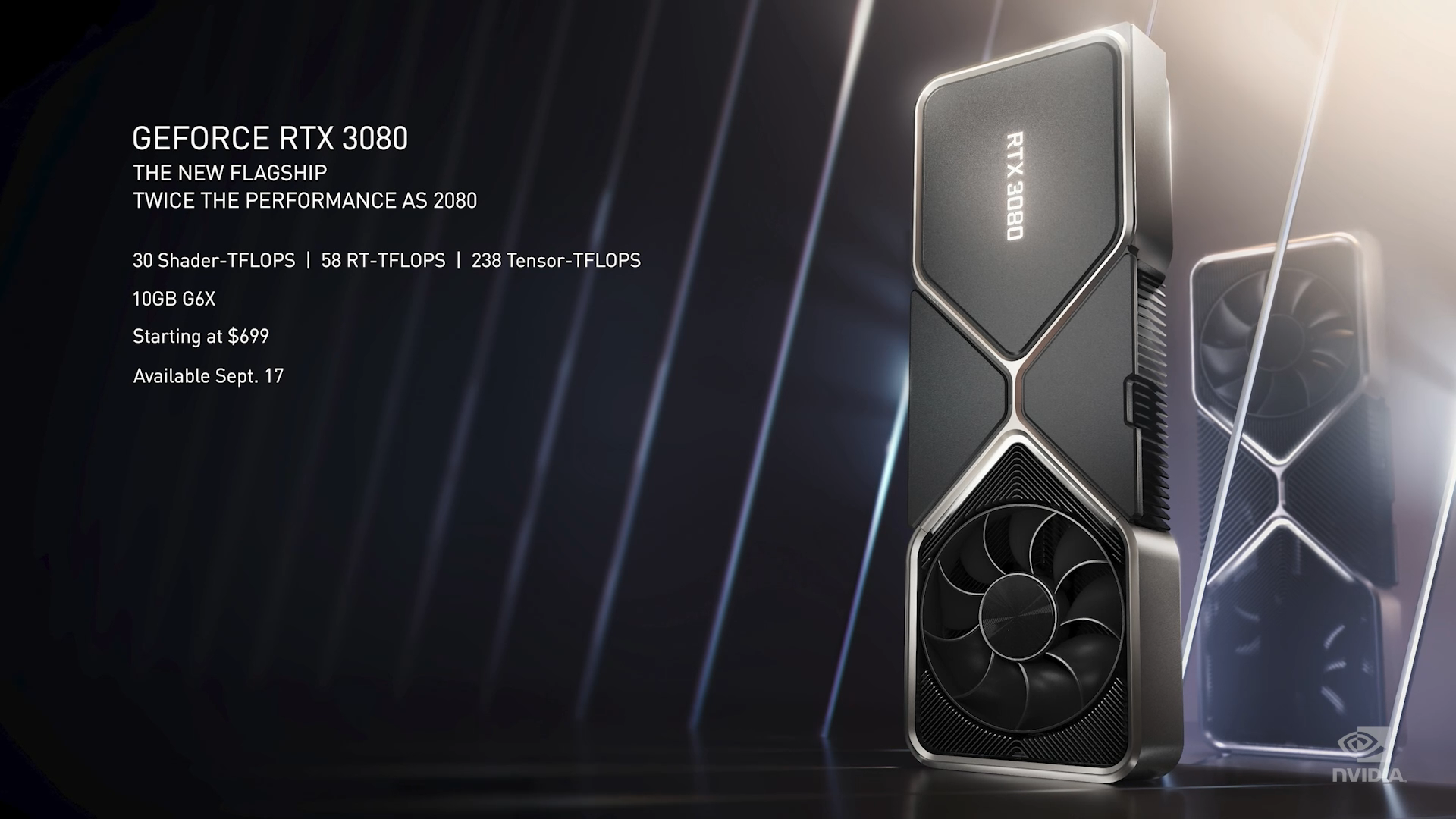



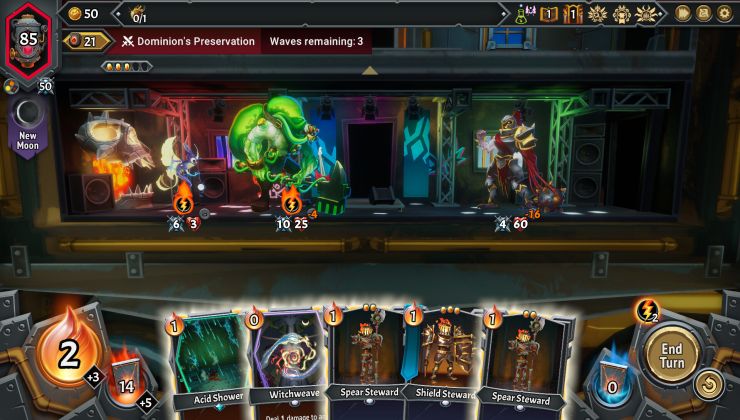
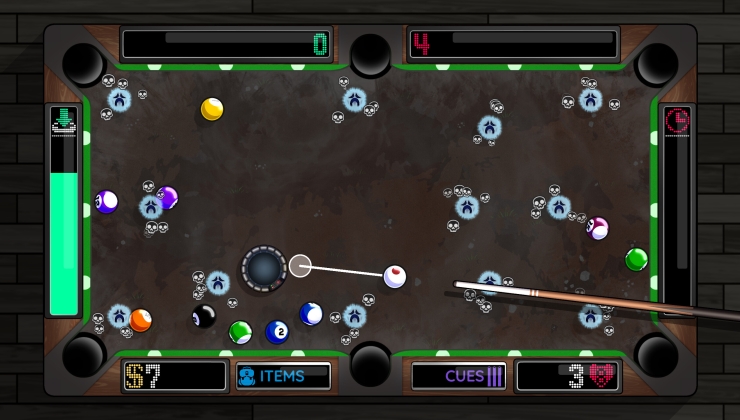
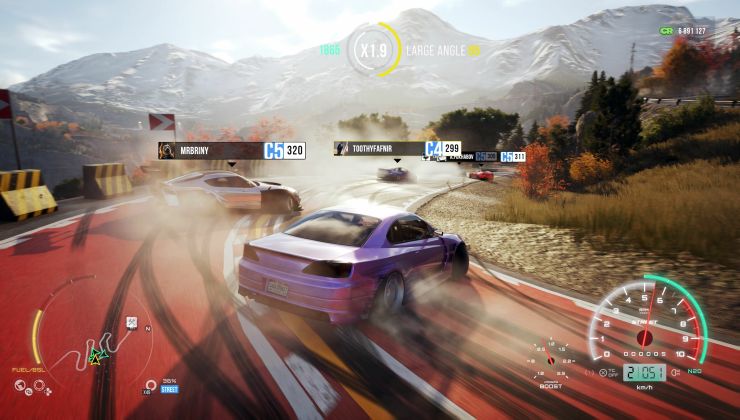
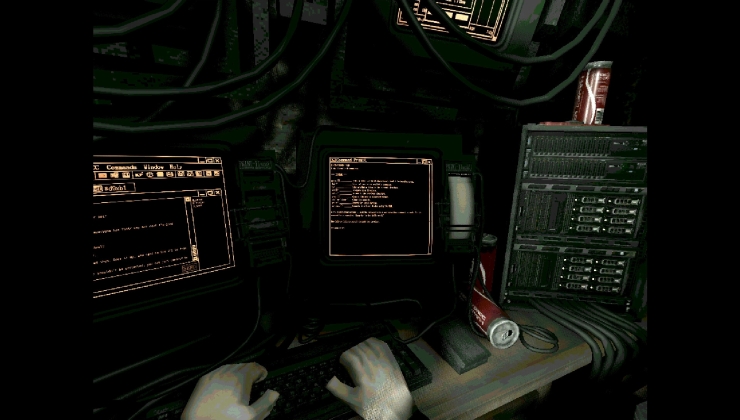






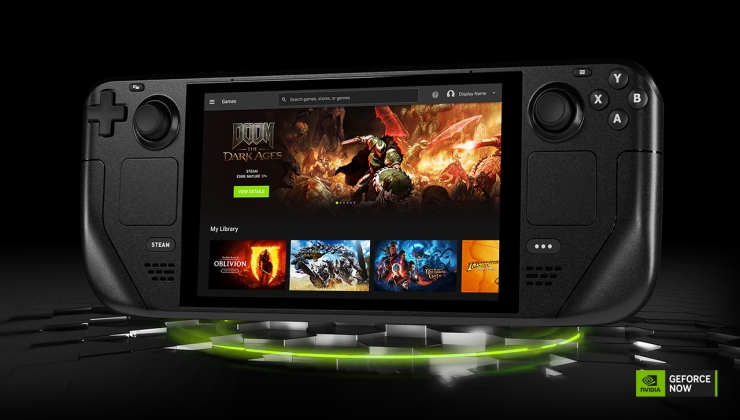 How to get GeForce NOW on Steam Deck, SteamOS
How to get GeForce NOW on Steam Deck, SteamOS How to install, update and see what graphics driver you have on Linux and SteamOS
How to install, update and see what graphics driver you have on Linux and SteamOS